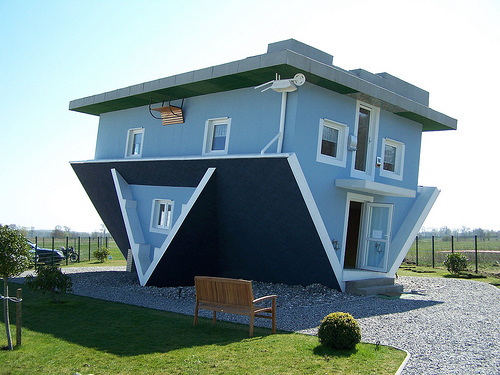 It looks so easy! Buy a house, make a few cosmetic fixes, put it back on the market and make a huge profit. At any given time there are half-a-dozen shows on television where good-looking, well-dressed investors make the process look fast, fun and profitable. And plenty of homes are getting flipped. ATTOM Data Solutions reports that more than 200,000 in the United States were bought and the resold with the same 12-month period in 2017. That’s just under 6% of all the single-family homes and condominiums sold all year. Yet, the road to real-estate riches isn’t all about curb appeal and “sold” signs. Far too many would-be real estate moguls overlook the basics and end up failing. In this article, we’ll look at the five biggest mistakes would-be flippers make – and how to avoid them.
It looks so easy! Buy a house, make a few cosmetic fixes, put it back on the market and make a huge profit. At any given time there are half-a-dozen shows on television where good-looking, well-dressed investors make the process look fast, fun and profitable. And plenty of homes are getting flipped. ATTOM Data Solutions reports that more than 200,000 in the United States were bought and the resold with the same 12-month period in 2017. That’s just under 6% of all the single-family homes and condominiums sold all year. Yet, the road to real-estate riches isn’t all about curb appeal and “sold” signs. Far too many would-be real estate moguls overlook the basics and end up failing. In this article, we’ll look at the five biggest mistakes would-be flippers make – and how to avoid them.
The first, best piece of advice is to limit your financial risk and also maximize your return potential. Put simply, don’t pay too much for a home (by knowing what it’s worth) and make sure you also know how much the necessary repairs or upgrades will cost before you buy. Having that information, you can then figure an ideal purchase price.
The 70% rule states that an investor should pay no more than 70% of the ARV (after-repair value) of a property minus the repairs needed. The ARV is what a home is worth after it is fully repaired.
Here’s an example: If a home’s ARV is $150,000 and it needs $25,000 in repairs, then the 70% rule means that an investor should pay no more than $80,000 for the home. $150,000 x 0.70 = $105,000 – $25,000 = $80,000.
Read Full Article [Source: www.investopedia.com]




